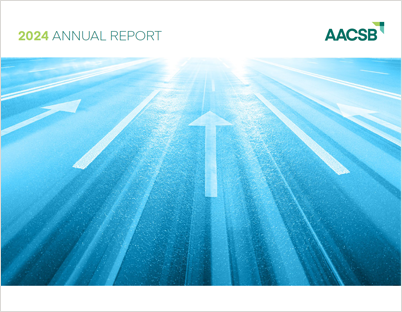Research Roundup: January 2024
An Era of Empowered Employees
The labor market has entered what researchers at Henley Business School in the United Kingdom are calling “the Omniployment Era,” in which employers will need to take a different approach to hiring and retaining workers.
For a recent report, the researchers surveyed 3,000 individuals employed full-time in diverse positions at private-sector companies in the U.K. The team found that today’s labor force breaks down into six worker segments:
- Work-life balance advocates (39 percent of the workforce)
- Socially conscious workers (15 percent)
- Lone rangers (14 percent)
- Salary-driven weekend workers (13 percent)
- Employee advocates (10 percent)
- Employee satisfaction enthusiasts (10 percent)
Work-life balance advocates and employee satisfaction enthusiasts, for example, might seek jobs with flexible schedules and hybrid work options. Socially conscious workers, on the other hand, might look for companies that have good social records, offer maternity/paternity leave, and are transparent in their communications and practices.
Interestingly, the researchers note that a company’s commitment to diversity, equity, and inclusion (DEI) has little bearing on whether any of the six types of workers applied for a job position. However, a lack of DEI is one of several factors that cause people to leave their jobs, along with unsafe working environments, toxic workplace cultures, and noncompetitive salaries.
According to the report, 30 percent of the U.K.’s workforce is currently job-hunting, including 46 percent of people who just changed jobs in the last year. This indicates that employees are more willing to leave jobs where they do not feel valued or that do not suit their work preferences.
The research was led by Rita Fontinha, associate professor of strategic human resource management, and James Walker, pro-dean of academic resources and director of the Henley’s World of Work Institute. They advise companies to allow workers to customize their benefits packages to choose the options that suit them best. In addition, given increasing worker mobility, companies should consider adopting a strategy called “demand resourcing,” in which they hire employees on a just-in-time basis for specific projects and assignments.
The report underscores the fact that business leaders “should take steps to change the one-size-fits-all approach of the past,” says Fontinha. Otherwise, “employees in sectors with a high demand for talent feel empowered to look elsewhere.”
When Overconfident Leadership Pays Off
In business, overconfidence can lead CEOs to exaggerate earnings or make risky investments, often with negative consequences. But such overconfidence can be good for companies under certain circumstances, according an open access paper published in the Journal of Management Studies.
The study’s co-authors include Marc Kowalzick of the Rotterdam School of Management at Erasmus University in the Netherlands, Jan-Philipp Ahrens of Mannheim Business School in Germany, Jochim G. Lauterbach of the Technical University of Munich, and Yi Tang of Hong Kong University Business School.
The team analyzed data on turnaround performances at 240 companies in the S&P 1500 index during the fiscal years 1992–2016. They considered whether the CEOs of these companies exhibited behaviors related to overconfidence, such as explaining away failures by pointing to “bad luck” or unforeseeable circumstances or “optimistically reinterpreting” substantially negative outcomes.
CEO overconfidence can be “a catalyst for failure or an accelerant for recovery,” depending on whether the CEO is an incumbent or a successor.
On the one hand, overconfident CEOs might ignore any opposition to their strategic plans or attempt to ride out organizational decline. But the researchers found that these behaviors might not lead to negative outcomes when CEOs have been newly hired to oversee a turnaround.
“Whereas overconfident successor CEOs appear to communicate a rather concrete roadmap and an ambitious vision of organizational turnaround,” the co-authors explain, “nonoverconfident successor CEOs rather tended to communicate a more cautious or vague roadmap focused on disciplined and inward-looking management.”
The study shows that CEO overconfidence “can either be a catalyst for failure or an accelerant for recovery,” the researchers write, “depending on whether it is an overconfident incumbent or an overconfident successor CEO performing ‘miracles.’”
The Effect of the ‘Say-Do’ Gap on Climate Change
A new research initiative aims to raise consumer awareness of climate change, as well as inspire consumers to change their behaviors in ways that mitigate the ongoing crisis. The initiative will be conducted by researchers at the University of Oxford’s Saïd Business School in the United Kingdom and the Digital Data Design Institute (D^3) at Harvard Business School in Boston, in partnership with Investcorp, a global investment manager specializing in alternative investments.
The partners released a white paper, “From Green Hearts to Green Carts: Bridging the Say-Do Gap for Climate Conscious Consumption,” just before the United Nations’ climate change conference, or COP28, held in the United Arab Emirates in December 2023. The paper’s co-authors, both from Saïd Business School, include Amir Amel-Zadeh, associate professor, and Qiaoye Yu, the Oxford-HEC Montréal Research Fellow in Sustainability.
Consumers in industrialized countries are responsible for 70 percent of the environmental impacts of housing, transport, and food. But although consumers increasingly express concern about climate change, their concern “has not yet translated into widespread changes in consumer behavior,” says Amel-Zadeh.
The researchers call this discrepancy the “say-do” gap. According to the white paper, the two biggest factors preventing consumers from bridging this gap are the higher cost of eco-friendly purchases and the significant effort required to “go green” in systems that do not support such behavior. In addition, consumers often distrust companies, suspecting them of “greenwashing” their sustainability efforts.
These initial findings highlight the need for companies to make green behaviors affordable, easy, and attainable, while adopting greater transparency and authenticity in their sustainability strategies. “Understanding the contributing factors of this attitude-behavior gap,” Amel-Zadeh concludes, “is critically important to addressing climate change.”
The Generational Effects of Bias
In 2023, only two Fortune 500 companies were led by Black women. At a time when organizations are aware of the strategic advantages of diversity, why is there still such a large racial and gender gap in senior leadership?
An analysis recently published in Scientific Reports explores why Black women are still underrepresented in senior leadership roles. Researchers from Australia and the United Kingdom used a language-based algorithm to analyze speeches archived in two repositories: the Iowa State University Archives of Women’s Political Speech and the Gift of Speech, hosted by Sweet Briar College in Virginia. The sample included 608 women, of whom 462 were white, 87 were Black or African American, 10 were Asian, and 18 were Hispanic or Latino. Thirty-one were of mixed, unknown, or other single racial backgrounds.
Dating back to 1851, these speeches were delivered by female leaders recognized for their leadership achievements. The researchers found that white female leaders, who experienced positive societal change over time, focused on new challenges in these speeches as old challenges were resolved. In contrast, minority female leaders, who did not experience such positive societal change, continued to maintain their focus on the same issues, such as justice, public education, mental health, and labor unions.
“Black female leaders often take on greater risks to address the compounded challenges of intersectional invisibility. Yet, compared to their white peers, their goals often remain unachieved.”
In addition, the researchers examined these women’s career trajectories. Here, they found that white female leaders tended to transition from specialist fields to generalist fields, while Black female leaders tended to follow a reverse trajectory, moving from generalist to specialist fields (from activism to economics, for example). Moreover, over their careers, Black female leaders in the sample engaged in 2.13 fields on average, compared to just 1.59 for white female leaders.
This finding suggests that minority female leaders had to work harder to receive the same recognition, even as they tackled the same problems over time. “Black female leaders often take on greater risks to address the compounded challenges of intersectional invisibility. Yet, compared to their white peers, their goals often remain unachieved,” the authors write. “Black female leaders have to be ‘twice as tall’ [referring to a song by rap artist Burna Boy] compared to their majority counterparts in order to succeed.”
This reality acts as a barrier to entry for minority women, says lead author Ganna Pogrebna, professor at the AI and Cyber Futures Institute at the University of Sydney Business School. In a “Behind the Paper” explanation of the study, Pogrebna notes that “each leader carried with her the weight of generational expectations, societal stereotypes, and personal battles.”
The researchers urge companies to measure the success of their diversity initiatives less on increasing the representation of minorities in their leadership roles and more on addressing generational challenges and improving “the experiential landscape” of leaders from underrepresented backgrounds. The goal, the authors emphasize, is that these leaders receive equal recognition for equal effort.
The study, says Pogrebna, is “a clarion call for a dynamic, holistic approach to leadership diversity … where transformative change and positive experiences are standard for minority leaders.”
Research News
■ College admissions officers have not yet embraced AI. Education services company Kaplan has released results from its survey indicating that most college and university admissions officers have not yet taken measures to detect or deter the use of generative artificial intelligence (GenAI) in the admissions process.
Of 200 admissions officers surveyed, 85 percent say they have not set rules regarding how applicants can use GenAI in their admissions essays; only 9 percent use software to detect the use of GenAI in their essay evaluation. Additionally, just 14 percent use AI in their own jobs or to reach prospective students.
However, Kaplan’s vice president of innovation and advising Isaac Botier stresses that admissions officers soon will have to act more aggressively on AI, as they receive “more questions from prospective students and their parents who want clear guidance and guardrails effectively communicated about what is permitted.”
■ Scholarships aim to advance research. The doctoral program at Henley Business School in the United Kingdom is offering 18 full scholarships for doctoral students beginning in the 2024–25 academic year. Three of the scholarships are aligned with the school’s World of Work Institute and Centre for Business Ethics and Sustainability. One will focus on the African context and align with current research projects at the Henley Business School Africa campus; this scholarship will allow a candidate from Africa to pursue doctoral study at Henley’s U.K. campus.
■ Wits creates future energy chair. Wits Business School (WBS) at the University of Witwatersrand in Johannesburg has received 6 million ZAR (approximately 315,300 USD) from the multinational banking firm Absa to form the Absa Chair in Future Energy. The chair will house a laboratory where faculty and student researchers will use data analytics to model the real-time impacts of a range of factors—including climate change, technology disruption, social instability, regulation lags, and climate-based market interventions—on the world’s energy systems.
One purpose of the initiative is to find “sustainable, long-term solutions to Africa’s energy crisis,” says Lwazi Ngubevana, director of the African Energy Leadership Centre at WBS. Researchers plan to provide insights that governments, academics, and the private sector can apply to make the world’s future energy supply more resilient and sustainable. The school will make research findings available to other African researchers working on similar problems.
Send press releases, links to studies, PDFs, or other relevant information regarding new and forthcoming research, grants, initiatives, and projects underway to AACSB Insights at [email protected].





